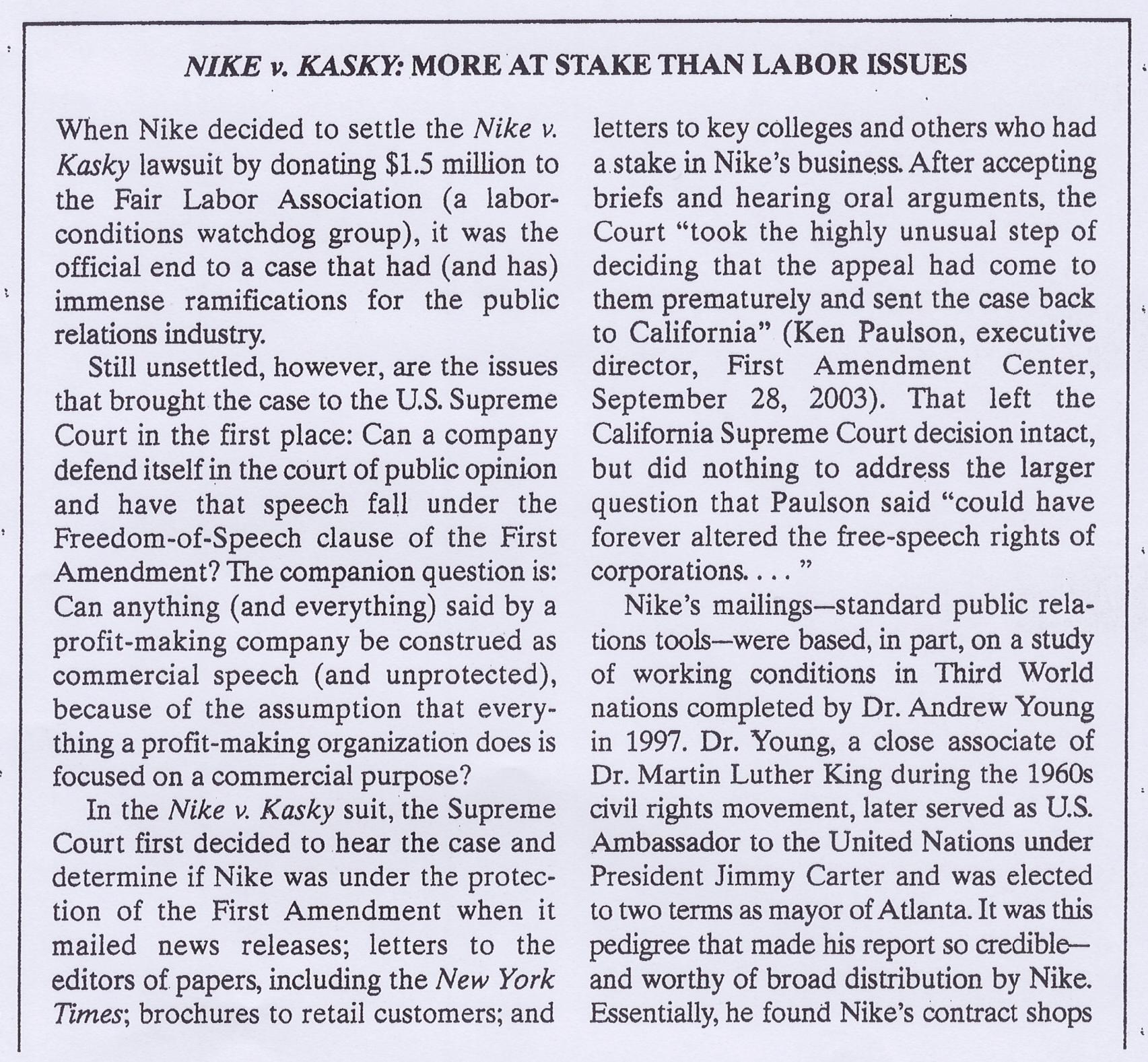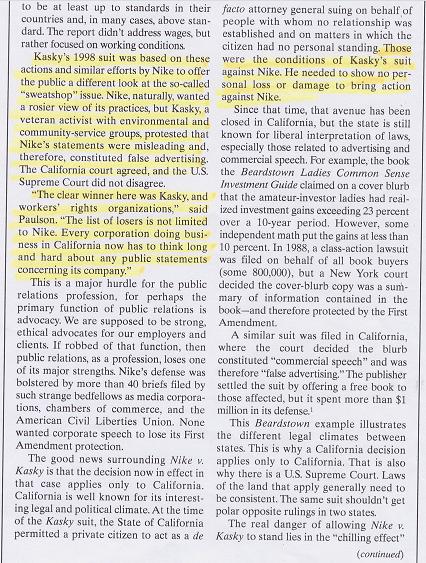Question
Read the case study first then: A summary should be written of case study that state the key issues of the case
Read the case study first then:





A summary should be written of case study that state the key issues of the case to reflect why the case went to court
What were some of the public relation issues?
Did the case highlight the workers' rights and conditions?
1. What was your overall opinion of the reading?
Provide key and important facts from the reading to support your opinion.
2. In paragraph 2 of the reading answer the 2 questions asked by giving some key facts that
are important based on your view points.
Try to provide examples to give your answer credibility.
3. What responsibility does NIKE have to the workers in their plant as well as working
conditions?
4. Would you agree that all workers have the right to voice their opinions on how
companies treat their employees?
5. Overall after reading the article what were some of the key factors that stood out within
the reading?
Give your opinion with examples from the reading.
: NIKE v. KASKY: MORE AT STAKE THAN LABOR ISSUES When Nike decided to settle the Nike v. Kasky lawsuit by donating $1.5 million to the Fair Labor Association (a labor- conditions watchdog group), it was the official end to a case that had (and has) immense ramifications for the public relations industry. Still unsettled, however, are the issues that brought the case to the U.S. Supreme Court in the first place: Can a company defend itself in the court of public opinion and have that speech fall under the Freedom-of-Speech clause of the First Amendment? The companion question is: Can anything (and everything) said by a profit-making company be construed as commercial speech (and unprotected), because of the assumption that every- thing a profit-making organization does is focused on a commercial purpose? In the Nike v. Kasky suit, the Supreme Court first decided to hear the case and determine if Nike was under the protec- tion of the First Amendment when it mailed news releases; letters to the editors of papers, including the New York Times; brochures to retail customers; and letters to key colleges and others who had a stake in Nike's business. After accepting briefs and hearing oral arguments, the Court "took the highly unusual step of deciding that the appeal had come to them prematurely and sent the case back to California" (Ken Paulson, executive director, First Amendment Center, September 28, 2003). That left the California Supreme Court decision intact, but did nothing to address the larger question that Paulson said "could have forever altered the free-speech rights of corporations.... " Nike's mailings-standard public rela- tions tools-were based, in part, on a study of working conditions in Third World nations completed by Dr. Andrew Young in 1997. Dr. Young, a close associate of Dr. Martin Luther King during the 1960s civil rights movement, later served as U.S. Ambassador to the United Nations under President Jimmy Carter and was elected to two terms as mayor of Atlanta. It was this pedigree that made his report so credible- and worthy of broad distribution by Nike. Essentially, he found Nike's contract shops
Step by Step Solution
There are 3 Steps involved in it
Step: 1

Get Instant Access to Expert-Tailored Solutions
See step-by-step solutions with expert insights and AI powered tools for academic success
Step: 2

Step: 3

Ace Your Homework with AI
Get the answers you need in no time with our AI-driven, step-by-step assistance
Get Started


